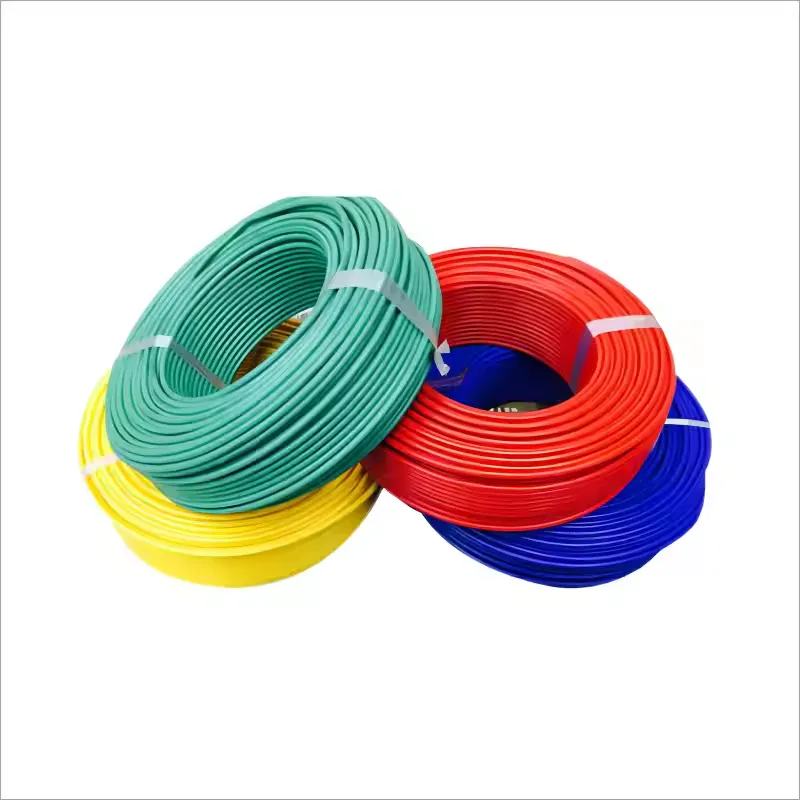What Is Voltage Drop and How Does It Affect Cable Performance
Table of Contents
Overview of Voltage Drop
Voltage drop is the reduction in voltage between the power source and the load due to the resistance of the cable conductors. It occurs as electrical current flows through a cable, causing energy loss in the form of heat. Voltage drop is a critical factor in electrical installations, as excessive drop can impair equipment performance, reduce efficiency, and pose safety risks. Standards like the National Electrical Code (NEC) recommend limiting voltage drop to 3% for branch circuits and 5% for combined feeder and branch circuits to ensure optimal system operation.

Factors Influencing Voltage Drop
Cable Length
Longer cables increase resistance, leading to greater voltage drop. For example, a 100-meter cable run will experience a higher voltage drop than a 10-meter run, assuming the same current and conductor size. Minimizing cable length through efficient routing is essential to reduce this effect.
Current Load
Higher current loads increase voltage drop, as more electrons flow through the cable, amplifying energy loss. Loads with high inrush currents, such as motors, can cause significant temporary voltage drops, affecting system stability.
Conductor Size
Smaller conductors, measured in American Wire Gauge (AWG) or square millimeters (mm²), have higher resistance, resulting in greater voltage drop. Larger conductors (lower AWG or higher mm²) reduce resistance and are often required for long runs or high-current applications.
Conductor Material
Conductor material impacts resistance and voltage drop. Copper has lower resistivity (1.68 × 10⁻⁸ ohm-meters) than aluminum (2.82 × 10⁻⁸ ohm-meters), making it more efficient for reducing voltage drop. Aluminum cables may require larger sizes to achieve the same performance as copper.
Temperature
Higher ambient or operating temperatures increase conductor resistance, exacerbating voltage drop. For instance, copper’s resistance rises by approximately 0.393% per °C above 20°C. Derating factors in standards like NEC account for temperature effects on cable performance.
Effects of Voltage Drop on Cable Performance
Excessive voltage drop can significantly impact cable and system performance, including:
- Reduced Equipment Efficiency: Low voltage at the load can cause motors to draw more current, leading to overheating and reduced lifespan.
- System Instability: Sensitive electronics, such as servers or medical equipment, may malfunction or shut down due to insufficient voltage.
- Energy Losses: Voltage drop results in wasted energy as heat, increasing operational costs, particularly in high-current or long-distance installations.
- Safety Hazards: Overheating from excessive voltage drop can degrade insulation, increasing the risk of electrical fires or short circuits.
- Non-Compliance: Exceeding recommended voltage drop limits may violate local codes, leading to inspection failures or legal penalties.
Calculating Voltage Drop
Voltage drop can be calculated using the following formula for single-phase systems:
Voltage Drop (V) = (2 × I × L × R) / 1000
Where:
- I = Current load (amps)
- L = Cable length (feet, one-way)
- R = Conductor resistance (ohms per 1000 feet, from NEC or manufacturer data)
Voltage Drop (V) = (√3 × I × L × R) / 1000
Percentage voltage drop is calculated as:
% Voltage Drop = (Voltage Drop / Source Voltage) × 100
Example: A single-phase circuit with a 20A load, 100 ft of 12 AWG copper cable (R = 1.588 ohms/1000 ft), and 120V source:
Voltage Drop = (2 × 20 × 100 × 1.588) / 1000 = 6.352V
% Voltage Drop = (6.352 / 120) × 100 = 5.29%
This exceeds the 3% limit, indicating a larger cable (e.g., 10 AWG) is needed.
Strategies to Mitigate Voltage Drop
- Increase Conductor Size: Use larger cables (e.g., lower AWG or higher mm²) to reduce resistance, especially for long runs or high-current loads.
- Shorten Cable Length: Optimize cable routing to minimize distance between the source and load.
- Use Higher Voltage: Higher voltage systems reduce current for the same power, lowering voltage drop (e.g., 240V vs. 120V).
- Choose Copper Conductors: Copper’s lower resistance makes it preferable for applications where voltage drop is a concern.
- Apply Derating Factors: Account for high ambient temperatures or conduit fill to ensure accurate sizing per NEC or IEC standards.
- Use Voltage Drop Calculators: Leverage software tools or online calculators for precise sizing in complex installations.
Summary Table: Voltage Drop Considerations
| Factor | Impact on Voltage Drop | Mitigation Strategy |
|---|---|---|
| Cable Length | Longer cables increase resistance | Shorten length, use larger conductors |
| Current Load | Higher currents amplify drop | Increase conductor size, use higher voltage |
| Conductor Size | Smaller sizes have higher resistance | Select larger cables (lower AWG) |
| Conductor Material | Aluminum has higher resistance than copper | Prefer copper for critical applications |
| Temperature | Higher temperatures increase resistance | Apply derating factors, select suitable insulation |
Conclusion
Voltage drop is a critical consideration in electrical installations, affecting cable performance, equipment efficiency, and system safety. Factors such as cable length, current load, conductor size, material, and temperature significantly influence voltage drop. Excessive drop can lead to energy losses, equipment malfunctions, and safety hazards, making accurate calculation and mitigation essential. By using larger conductors, optimizing cable routes, selecting copper, and adhering to standards like NEC or IEC, businesses can minimize voltage drop. Partnering with reputable suppliers like Jianyun Cable ensures access to high-quality cables designed for optimal performance, supporting safe and efficient installations.
Source: JianYunCable.
Comments
Post a Comment